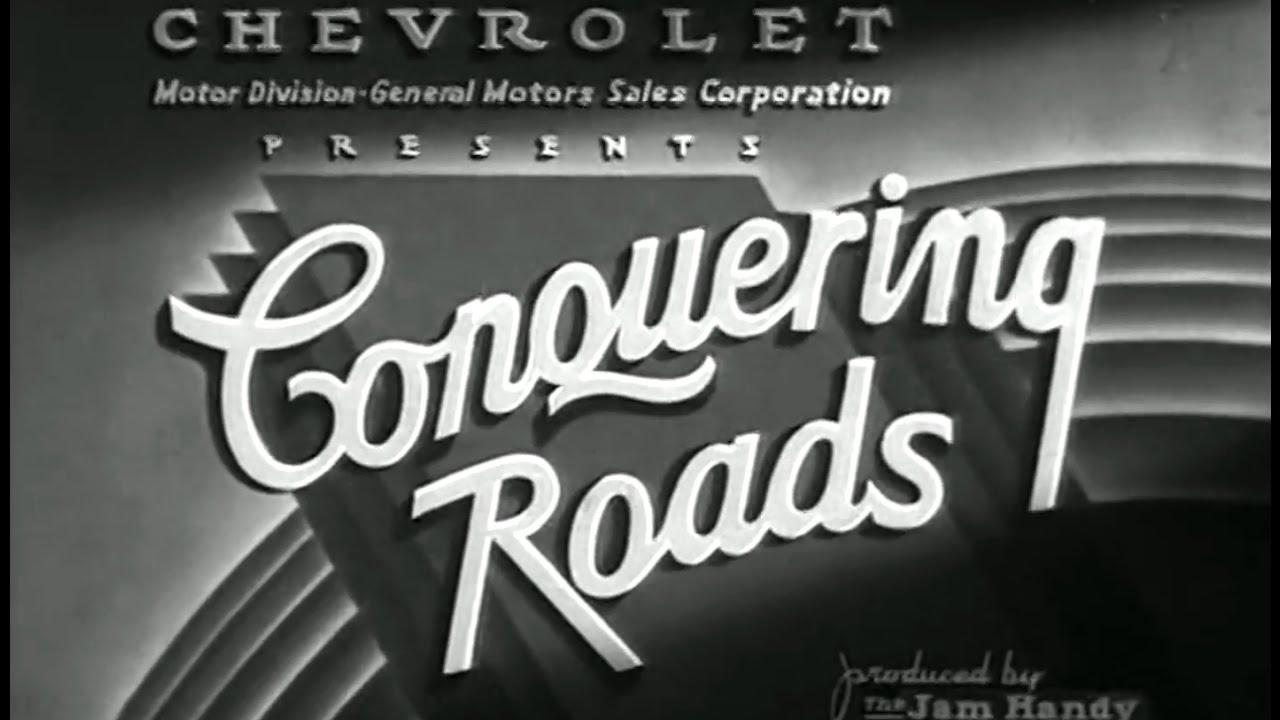Automobile Transportation playlist:
more at
“Highway engineering and development in the pre-Interstate era.”
Reupload of a previously uploaded film with improved video & sound.
Public domain film from the Library of Congress Prelinger Archives, slightly cropped to remove uneven edges, with the aspect ratio corrected, and one-pass brightness-contrast-color correction & mild video noise reduction applied.
The soundtrack was also processed with volume normalization, noise reduction, clipping reduction, and/or equalization (the resulting sound, though not perfect, is far less noisy than the original).
A highway is any public road or other public way on land; the term exists in distinction to waterway. In North American and Australian English, the term frequently implies a major road such as a controlled-access highway or an arterial, generally under the control of a state or provincial agency instead of a local road authority. In British English, highway is primarily a legal term, and normal usage implies roads, while legal usage covers any route or path with a public right of access, including footpaths etc. The term has led to several related derived terms, including highway system, highway code, and highway patrol…
Modern highway systems developed in the 20th century as the automobile gained popularity. The world’s first limited access road was constructed in Italy in 1922 (see autostrade). Construction of the Bonn–Cologne autobahn began in 1929 and was opened in 1932 by the mayor of Cologne, Konrad Adenauer.
In the USA The Federal Aid Highway Act of 1921 (Phipps Act) enacted a fund to create an extensive highway system. In 1922, the first blueprint for a national highway system (the Pershing Map) was published. The Federal Aid Highway Act of 1956 allocated $25 billion for the construction of the 41,000 miles (66,000 km) long Interstate Highway System over a 20-year period.
In Great Britain the Special Roads Act 1949 provided the legislative basis for roads for restricted classes of vehicles and non-standard or no speed limits applied (later mostly termed motorways but now with speed limits not exceeding 70mph); in terms of general road law this legislation overturned the usual principle that a road available to vehicular traffic was also available to horse or pedestrian traffic as is usually the only practical change when non-motorways are reclassified as special roads. The first section of motorway in the UK opened in 1958 (part of the M6 motorway) and then in 1959 the first section of the M1 motorway…
The United States has the world’s largest network of highways, including both the Interstate Highway System and the U.S. Highway System. At least one of these networks is present in every state and they interconnect most major cities.
China’s highway network is the second most extensive in the world, with a total length of about 3.573 million km. China’s expressway network is the longest Expressway system in the world, and it is quickly expanding, stretching some 85,000 km at the end of 2011. In 2008 alone, 6,433 km expressways were added to the network.
– Longest international highway: the Pan-American Highway, which connects many countries in the Americas, is nearly 25,000 kilometres (15,534 mi) long as of 2005. The Pan-American Highway is discontinuous because there is a significant gap in it in southeastern Panama, where the rainfall is immense and the terrain is entirely unsuitable for highway construction.
– Longest national highway (point to point): The Trans-Canada Highway is 7,821 km (4,860 mi) long as of 2006. The T.C.H. runs east-west across southern Canada, the populated portion of the country, and it connects many of the major urban centres along its route crossing almost all of the provinces, and reaching almost all of the capital cities…
– Longest national highway (circuit): Australia’s Highway 1 at over 20,000 km (12,000 mi).[citation needed] It runs almost the entire way around the continent’s coastline. With the exception of the Federal Capital of Canberra, which is far inland, Highway 1 links all of Australia’s capital cities…

